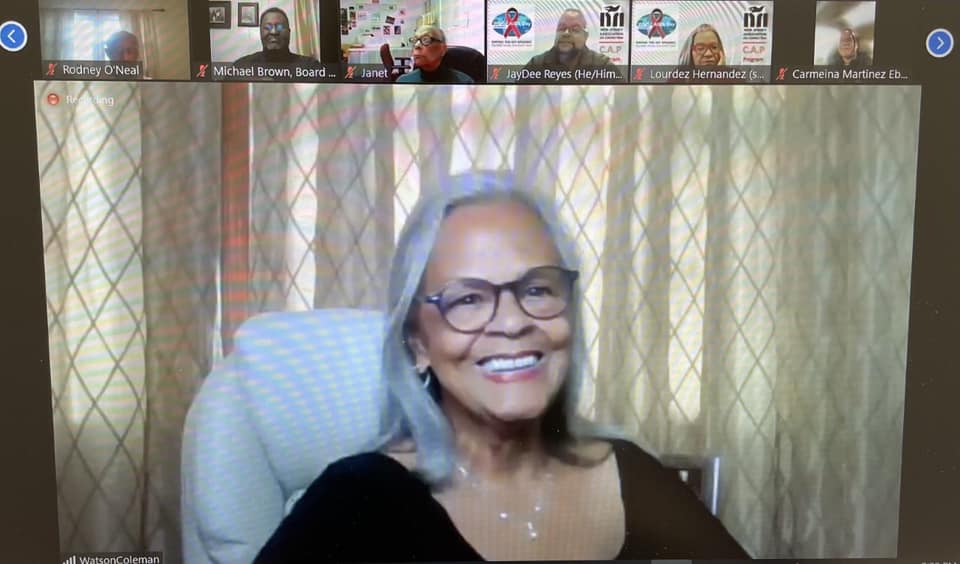On Friday, Congresswoman Bonnie Watson Coleman (NJ-12) met with representatives from State and Local government, including New Jersey Treasurer Elizabeth Muoio, Mercer County Executive Brian Hughes, City of Trenton Mayor Reed Gusciora, New Jersey Assemblywoman Verlina Reynolds Jackson and New Jersey Assemblyman Anthony Verrelli, to discuss some of the great opportunities the Infrastructure Investment and Jobs Act poses for our local communities.
The historic Bipartisan Infrastructure Deal (Infrastructure Investment and Jobs Act) passed by Congress in November of 2021, represents a once-in-a-generation investment in the nation’s infrastructure and competitiveness. “With the recent passage of the Infrastructure Investments and Jobs Act we can finally get started on important infrastructure projects that have been put off for far too long here in the Capital City, here in Mercer County and indeed in our state,” said Watson Coleman. “This historic bipartisan infrastructure law will make life better for millions of New Jersey residents, create a generation of good paying union jobs and spur economic growth.”
In July of 2021, Bonnie Watson Coleman announced the passage of two targeted infrastructure projects for the City of Trenton through the House Appropriations Committee. Along with the previously passed Route 29 Tunnel Transportation and Infrastructure (T&I) project these initiatives constitute significant infrastructure improvements.
Rep. Watson Coleman Announces $3.9 Million in Investments in Trenton Infrastructure
The Infrastructure Deal will rebuild America’s roads, bridges and rails, expand access to clean drinking water, ensure every American has access to high-speed internet, tackle the climate crisis, advance environmental justice, and invest in communities that have too often been left behind. The legislation will help ease inflationary pressures and strengthen supply chains by making long overdue improvements for our nation’s ports, airports, rail, and roads. It will drive the creation of good-paying union jobs and grow the economy sustainably and equitably so that everyone gets ahead for decades to come. Combined with the President’s Build Back Framework, it will add on average 1.5 million jobs per year for the next 10 years. (Source: The White House Briefing Room https://www.whitehouse.gov/briefing-room/statements-releases/2021/11/06/fact-sheet-the-bipartisan-infrastructure-deal)
Watson Coleman touched on a number impacts of the Bill including enhancements at Trenton-Mercer Airport, job creation, and improving and reimagining Route 29, both the tunnel and roadway. “Today, every truck must exit Route 29 before reaching the tunnel and then drive through residential neighborhoods. It is an issue that is unhealthy for these communities in terms of safety, emission and efficiency… This Bill will address those issues in remediating some of that negative impact on our climate and on our communities.”
The Bill will expand access to clean drinking water for households, businesses, schools, and child care centers all across the country; ensure every American has access to reliable high-speed internet; rebuild roads and bridges with a focus on climate change mitigation, resilience, equity, and safety for all users; improve transportation options for millions of Americans and reduce greenhouse emissions through the largest investment in public transit in U.S. history; upgrade the nation’s airports and ports to strengthen our supply chains and prevent disruptions that have caused inflation; and make the largest investment in passenger rail since the creation of Amtrak.
The Bill will also build a national network of electric vehicle (EV) chargers; upgrade our power infrastructure to deliver clean, reliable energy across the country and deploy cutting-edge energy technology to achieve a zero-emissions future; make our infrastructure resilient against the impacts of climate change, cyber-attacks, and extreme weather events; and deliver the largest investment in tackling legacy pollution in American history by cleaning up Superfund and brownfield sites, reclaiming abandoned mines, and capping orphaned oil and gas wells.





